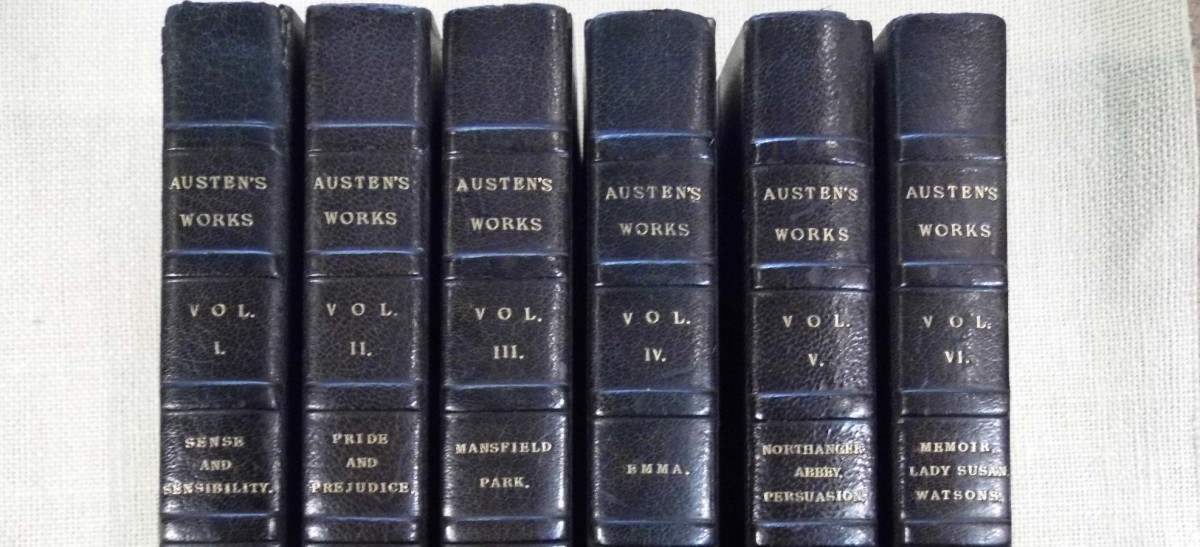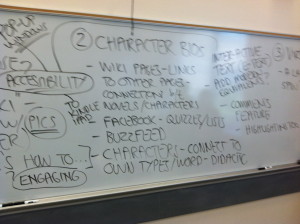Last Spring’s students successfully annotated the first 30 chapters of Sense and Sensibility. We found better ways to work the Creative Reading annotations into the fabric of classroom discussion, though this remains an area to continue experimenting with. We also substituted peer-to-peer commenting on the Cultural/Historical annotations with “curator” comments sent by email from me to individual students. This proved to be rather labor intensive for said curator, and while student commentary was generally positive about adding this step, some articulated a desire to maintain the peer-to-peer experience as well. We’ll try to find the time in the process to do both this semester. I’ve therefore added an extra “Annotate-a-thon” day into the course schedule for Spring 2018.
Perhaps the highlight of our collective experience last go round was presenting the Annotating Austen project at the first annual SFSU Undergraduate Research Symposium (and competition) in May. Students worked very hard to prepare for this event. We spent a good deal of time figuring out just how we would collectively present an ongoing digital resource such as this. In the end, we decided to maintain a booth for the afternoon instead of giving a formal presentation. We asked for two large monitors and students connected their laptops to these which allowed for attendees to check out the website themselves, and made it possible for students to give mini-demonstrations when called upon. The six student groups all took a turn at the booth, and, truth be told, I didn’t even need to be there. It was, from my perspective, quite wonderful to watch and hear the students explain their work and answer questions about the project. They even handled an anti-Austen judge with more earnestness and grace than he deserved. We didn’t win anything but, hey, it was fun and the food was free.
What follows are some memorable comments culled from 2017 students’ reflective essays (with some editorial response here and there) that might be of interest as we embark on the next iteration of the project:
- Creative Reading Annotations
- “I had the most fun with the Creative Reading annotations. Writing them inspired me to look for significance between the lines, or through what was not being said explicitly. Writing them also made me think more critically about the action of the novel, and not just accept the story before me. Most importantly, this kind of annotation required me to read the text very closely, something I’ve always struggled to do because I’m eager to keep reading.”
- “Compared to annotating alone and writing one’s own thoughts on a page, demonstrating my views on the website made it feel like I was in a virtual book club.”
- “Being one of the students who doesn’t speak up in class much, the Creative Reading annotations were really enjoyable to me. I was able to comment on other people’s annotations and got to see my other classmates’ reactions to the novel that weren’t mentioned in class.”
- “A better way to incorporate [Creative Reading annotations] into the classroom discussion of the novel could be asking people to share their annotations, or bringing them up on the screen to look at in class.”
- Cultural/Historical Annotations
- “We published a lot of visuals for readers to have a better understanding as to how the furniture, clothing, and other [material items] looked during the Regency era.”
- “Many terms I found in the novel had a different meaning in Austen’s period than how we define them now in today’s language.” [The Oxford English Dictionary is the essential resource for sorting these historical differences in meaning and usage out; you will all no doubt have occasion to use it.]
- “I definitely learned more about the Regency period by doing research for my annotations and from reading my peers’ annotations.”
- “This part of the assignment improved my research skills and taught me how to use online library resources more effectively.”
- Advice
- “I think it would be something really important to emphasize to future classes that the [Cultural/Historical] annotations are meant to be helpful notes left behind for future readers, not just a class assignment where you have to do your quota so you can move on to the next assignment.” [Indeed, it’s good to remember that this part of our work exists in the public sphere.]
- “Proofread, proofread, and proofread again.” [Words to live by!!!]


